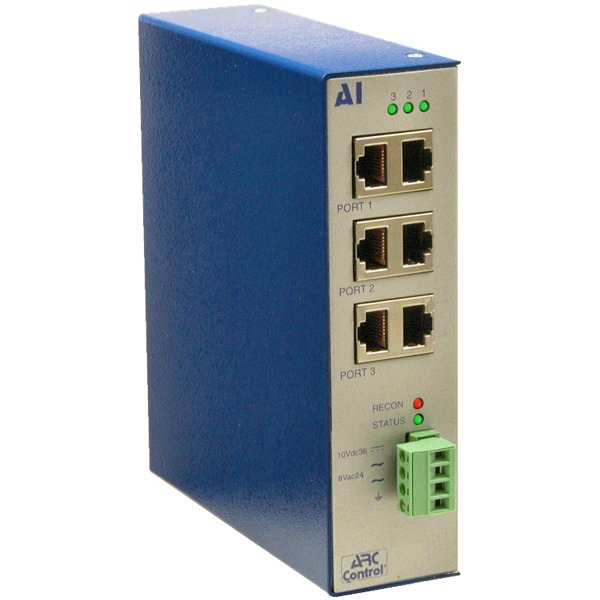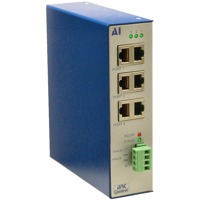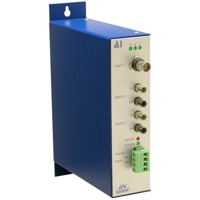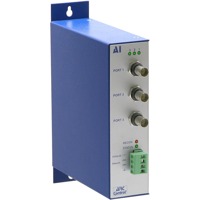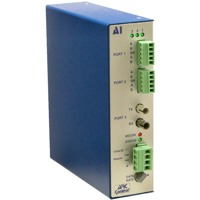AI Series – Fixed Port Active Hubs and Links
The ARCNET® Interconnect (AI) Series of fixed-port hubs expand ARCNET Local Area Networks (LANs) with repeaters, links and hubs. Repeaters extend a network using the same cabling technology. A link mixes two cabling technologies — functioning as a media converter. A hub adds a segment to support a distributed star topology. The method implemented depends on the number of ports. The AI2 has two ports for repeater and link applications — while the AI3 implements the hub function.
The AI operates from either wide-range, low-voltage AC (8–24 VAC) or DC (10–36 VDC) power. If needed, a redundant power source can be attached. Each port LED indicates received data or token passing. Each unit has one LED for unit status and one for reporting network reconfigurations. EIA-485 data rates of 78 kbps to 10 Mbps are supported.
A watchdog timer stops hub lockup, eliminating the need to cycle power on signal transmission error.Active hubs boost network robustness and extend segment distance up to 2,000 feet (610 m) on coaxial segments and 6,000 feet (1,825 m) on multimode fibre optic segments. Unused hub ports need not be terminated. A distributed star topology minimizes required cabling — while inks and repeaters extend bus systems or bridge to other media.


